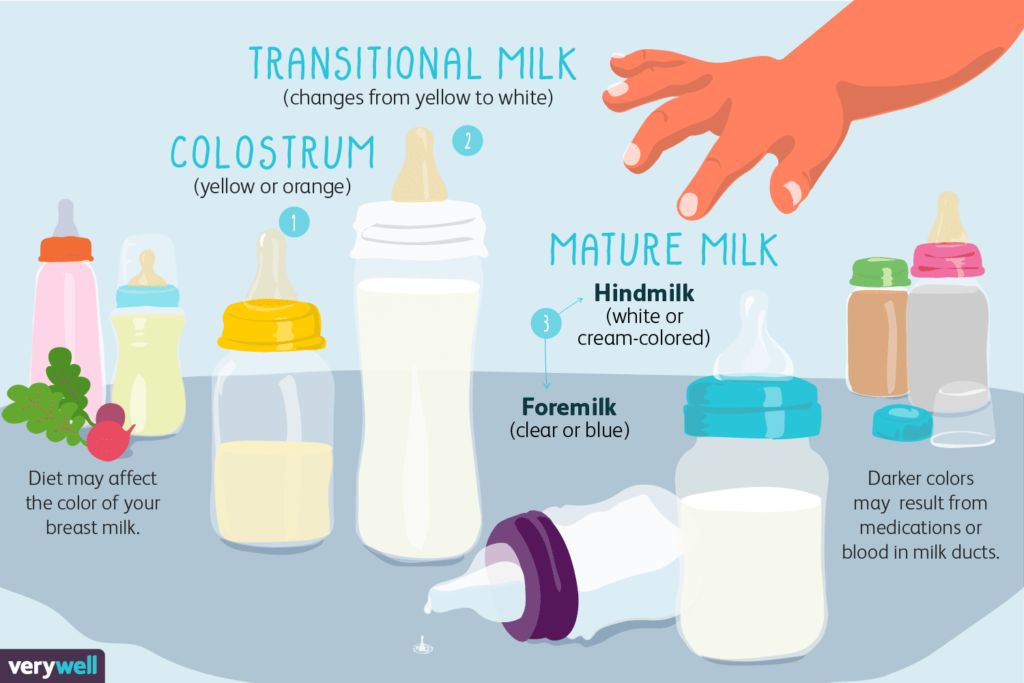The last leg of every woman’s pregnancy journey is lactation. We say that the pregnancy journey does not end as soon as you deliver a child because there are post-pregnancy ordeals that women need to figure out and lactation is one of them.
Once you have learned the art of lactation, people consider your pregnancy journey to have come to a close and motherhood begins.
What Is Lactation?
Lactation is the process through which women produce milk for their babies. It is a natural phenomenon classified as one of the most incredible things a human body can do.
When babies are born, they require nutrition and need to be fed. Babies cannot thrive on anything except milk, as they cannot eat anything for the first six months. So, the only thing that their diet includes is milk.
When a woman is pregnant with her child, certain hormones will come into effect and start producing milk naturally. Once you have given birth, and your child suckles on your breast, the cycle starts and the mammary glands produce milk which the child drinks.
Human-produced milk is also known as breastmilk and lactation is called breastfeeding.
Many experts and healthcare providers consider breastmilk to be ‘liquid gold’.
Benefits of Lactation
Like all things natural, breastfeeding or lactation is exceptionally beneficial. It is a great source of nutrients such as lactose, water, protein, carbohydrates, and minerals such as calcium, magnesium, phosphorus, sodium etc.
It has numerous advantages, both for the mother and the baby.

For the Baby
Breastmilk is considered essential for a baby’s needs. It is full of minerals and is a great source of nutrients for the baby. Some of the benefits of breastmilk are:
- It provides complete nutrition to the baby
- Protects the baby from various ailments such as sudden infant death syndrome (SIDS), Type 1 diabetes, obesity, asthma, and many more.
- It helps the brain to grow and function.
- It is easily digested so you won’t have to worry about constipation or diarrhea.
- It creates a bond between the mother and the baby.
The benefits are endless.
For the Mother
Breastfeeding your baby has many benefits for mamas as well. Some of them are:
- It reduces the risk of breast cancer.
- It reduces the chances of type 2 diabetes.
- Controls blood pressure.
- The hormones released during breastfeeding help the uterus to contract.
- Breastfeeding helps you lose your pregnancy weight.
- It helps you create a bond with your baby.
Types of Breast Milk
Yes, there are different types, or rather stages of breastmilk although you don’t have to worry about the stages, your body shifts from one stage to another on its own and you don’t really have to do much about it.

The stages of breastmilk are as follows:
Colostrum
Colostrum is a thick, off-white cream-like milk that your mammary glands produce right at the beginning. When you start producing breastmilk, colostrum is the first milk that is produced. It is jam-packed with antibodies and should not be wasted.
Transitional Milk
Transitional milk is the milk you produce when your baby is starting to suckle and you are learning to latch the baby onto you. It is the stage when you have produced colostrum but have not started producing mature milk yet.
Mature Milk
Around 2-3 weeks after you deliver your baby and have figured out the art of breastfeeding, you will start producing mature milk which you will produce till you wean your baby off breastfeeding. Breastmilk has two types, foremilk and hindmilk.
Foremilk
When your baby starts suckling, the milk that comes first is foremilk. Foremilk is lighter and watery and is a great way for babies to get hydration.
Hindmilk
Hindmilk is the milk that comes after foremilk, it is thicker and has more fat content. Hindmilk is great for babies to fill their tummies and make them healthier.
Involutional Milk
Involutional milk is the milk produced by the mammary glands at the end of your lactation journey. Sometimes, your milk supply dries up naturally or on its own, and sometimes women wean their babies off breast milk so when the baby doesn’t suckle, the breast milk dries up.
How to Breastfeed the Baby
Most healthcare providers will tell you to breastfeed your baby for at least 15 minutes on each side so that you get a good supply of hindmilk. Most women breastfeed their child for around 5 minutes each side and then they say the baby started crying for milk in 10 minutes.

That is because your baby probably only got foremilk and so their tummy wasn’t filled. The best way is to breastfeed your child for 15 minutes on each side and feed from both sides.
Problems of Breastfeeding
Breastfeeding is a difficult task. Women make it look seemingly easy and natural but trust me, getting the hang of it is horribly difficult. There are a few problems associated with breastfeeding. Some of them are:
Latching Problems
Latching is when your baby starts to suckle. Babies have a knack for latching onto you but sometimes, babies just can’t get the hang of it. They are unable to latch onto you and so they have problems with drinking milk. This is frustrating for both the mom and the baby because they become cranky when they are hungry and you are ready to feed them too but they just can’t seem to latch onto you properly.
The best way to fix this problem is to, first of all, relax, and try and try again. Check out a few videos online to see how to latch your baby onto you.
Mastitis
Mastitis is the horror of plugged ducts and engorgement. Often times when you have a good milk supply, but are not feeding often, or even if you are feeding often, you might encounter blocked milk ducts. This happens when the milk is unable to come out of the milk ducts.
Blocked milk ducts cause a lump-like feeling in your breast and are painful. It can also lead to breast engorgement and if not treated properly, it can lead to mastitis which is when the blocked milk develops an abscess and then is usually removed surgically.
Blocked ducts are usually cleared when your baby takes their next feed. If you are still having trouble clearing the ducts, take a warm shower and massage the lump to dissolve it, or give warm compression by using a warm towel or something.
If you feel that the duct is still not clearing up, talk to your healthcare provider, and do not take this lightly at all.
Low Milk Supply
Many women face a low milk supply which means that they are not producing enough milk for some reason. The most common reason for this could be that you are not eating well enough. There are many things you can have to boost lactation, such as:
- Lactation cookies
- Fennel Tea
- Fox Nuts or Pop Corn
- Semolina Pudding
- Cumin Seeds (just a pinch)
If you feel your supply is not good enough and your baby may not be getting enough nutrition, just talk to your healthcare provider, maybe they will put you through to a lactation consultant or recommend formula milk to your baby. Both options are fine, because, in the end, all you want is a healthy and hydrated baby.
Conclusion
Lactation is a learning process for both the mother and the baby, it is difficult but once you get the hang of it, it comes to you so naturally, that you’ll feel like you’ve been doing it your whole life.
Lactation is a natural process with tremendous benefits but if you are unable to figure it out and have to resort to formula milk for your baby, then do not be disheartened because as long as your baby is fed and happy, nothing else really matters.
